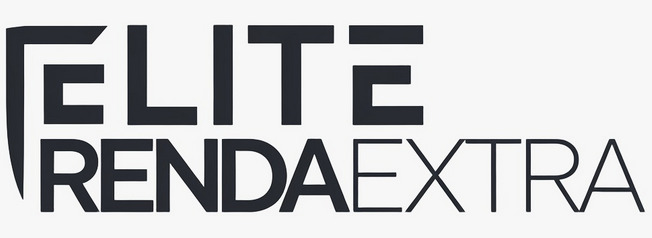Navigating the world of personal finance can sometimes feel complex, especially when you need access to funds for a significant life event, a major purchase, or to consolidate debt. A personal loan is a common financial tool used by Canadians to achieve these goals, but the application process can seem daunting if you’re unfamiliar with it.
Understanding the steps involved, what lenders are looking for, and how to prepare can make a significant difference. This 2024 guide is designed to demystify the process of applying for a personal loan in Canada, providing you with the clarity needed to move forward with confidence.
Understanding the Basics of Personal Loans in Canada
Before diving into the application process, it’s helpful to have a clear picture of what a personal loan is. Essentially, it’s a sum of money you borrow from a financial institution—like a bank, credit union, or online lender—that you agree to pay back in fixed monthly payments, or installments, over a set period. This also includes interest and sometimes fees.
Secured vs. Unsecured Personal Loans
In Canada, personal loans generally fall into two main categories:
- Unsecured Personal Loans: These are the most common type. They are not backed by any collateral (like a car or a house). The lender approves the loan based on your creditworthiness, including your credit score and income. Because the lender takes on more risk, interest rates may be slightly higher.
- Secured Personal Loans: These loans are backed by an asset you own, which serves as collateral. If you are unable to repay the loan, the lender has the right to seize the asset. Because the risk for the lender is lower, secured loans often come with more favourable interest rates.
Before You Apply: Essential Preparation Steps
Proper preparation is arguably the most critical part of the entire loan application journey. Taking these steps beforehand can streamline the process and improve your chances of a favourable outcome.
Assess Your Financial Health
Lenders will take a close look at your financial situation to assess their risk. Start by reviewing your own finances. Check your credit score through one of Canada’s main credit bureaus, Equifax or TransUnion. A higher score generally leads to better loan offers. Also, take a look at your debt-to-income (DTI) ratio—the percentage of your gross monthly income that goes toward paying your monthly debt payments. A lower DTI is always better.
Determine Exactly How Much You Need to Borrow
It can be tempting to apply for a larger amount than you need, but this can lead to unnecessary debt and higher interest payments. Carefully calculate the exact amount required for your purpose, whether it’s for home renovations, tuition, or consolidating credit card balances. Borrowing only what you need is a sign of a responsible borrower.
Gather Your Necessary Documentation
Having your documents ready will make the formal application process much smoother. While requirements can vary between lenders, you will almost certainly need the following:
- Proof of Identity: A government-issued photo ID (e.g., driver’s licence, passport).
- Proof of Address: A recent utility bill or bank statement.
- Proof of Income: Recent pay stubs, T4 slips, a letter of employment, or recent tax Notices of Assessment if you are self-employed.
- Banking Information: Details for your chequing account for the direct deposit of funds and automatic withdrawals for payments.
- Details of Existing Debts: A list of your current loans, credit card balances, and other financial obligations.
The Step-by-Step Personal Loan Application Process in Canada
Once you’ve completed your preparations, you can move on to the application itself. Following these steps in order will help you navigate the process effectively.
Step 1: Research and Compare Lenders
Don’t settle for the first offer you see. The lending market in Canada is diverse. Consider different types of lenders:
- Major Banks: Your own bank might be a good place to start, as they already have your financial history.
- Credit Unions: These member-owned institutions often offer competitive rates and more personalized service.
- Online Lenders: Also known as fintech companies, these lenders operate entirely online, often providing fast application processes and quick funding decisions.
Step 2: Compare Loan Offers Carefully
When comparing offers, look beyond just the monthly payment. Pay close attention to the Annual Percentage Rate (APR), which includes the interest rate plus any mandatory fees. This gives you a more accurate picture of the total cost of borrowing. Also, consider the loan term (the length of time you have to repay) and any potential penalties, such as prepayment fees for paying off the loan early.
Step 3: Consider Pre-Qualification
Many lenders, especially online ones, offer a pre-qualification process. This involves providing some basic financial information to see what loan terms you might be eligible for. A key benefit is that pre-qualification typically only requires a soft credit check, which does not impact your credit score. It’s an excellent, risk-free way to shop around.
Step 4: Submit the Formal Application
After choosing the best offer for your needs, you’ll proceed with the formal application. This is where you will provide all the documents you gathered earlier. The application will be more detailed than the pre-qualification form. Be sure to fill everything out accurately and truthfully, as any discrepancies can cause delays or a denial.
Step 5: Review the Agreement, Get Approved, and Receive Funds
If your application is approved, the lender will present you with a formal loan agreement. It is crucial to read this document carefully before signing. It will outline all the terms, including the interest rate, repayment schedule, and all fees. Once you sign and accept the agreement, the lender will typically deposit the funds directly into your bank account, often within one to two business days.
Key Factors That Influence Loan Approval
Understanding what lenders prioritize can help you see your application from their perspective.
Your Credit Score and History
This is one of the most significant factors. A strong credit history with a high score demonstrates that you have managed debt responsibly in the past, making you a lower-risk borrower.
Stable Income and Employment
Lenders need to be confident that you have a stable source of income to make your monthly payments. They will look at your employment history and current income level to verify this.
Debt-to-Income (DTI) Ratio
As mentioned earlier, your DTI ratio is a key metric. If a large portion of your income already goes toward debt, lenders may be hesitant to extend more credit, as it could stretch your finances too thin.
Common Missteps to Avoid
Being aware of common pitfalls can save you time, money, and stress.
- Applying for Multiple Loans at Once: Submitting many formal applications in a short period can result in multiple hard credit inquiries, which can lower your credit score. Stick to pre-qualifications for shopping around.
- Ignoring the Fine Print: Overlooking details in the loan agreement, like origination fees or prepayment penalties, can lead to unexpected costs down the road.
- Not Being Realistic About Repayment: Ensure the monthly payment fits comfortably within your budget. A loan should solve a financial problem, not create a new one.
The journey to securing a personal loan in Canada is much more approachable when you are well-informed. By taking the time to understand your own financial standing, research your options thoroughly, and prepare your documentation, you place yourself in a strong position. Navigating the Canadian lending landscape with this knowledge empowers you to make financial decisions that are right for your unique circumstances.

